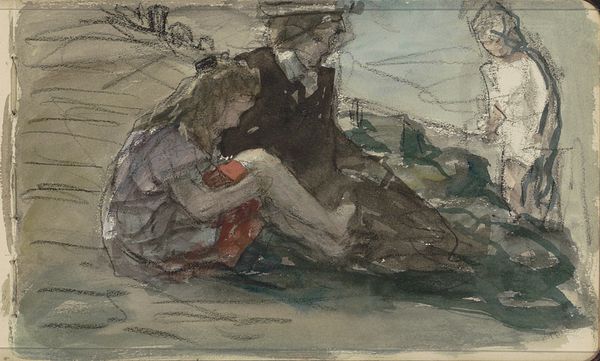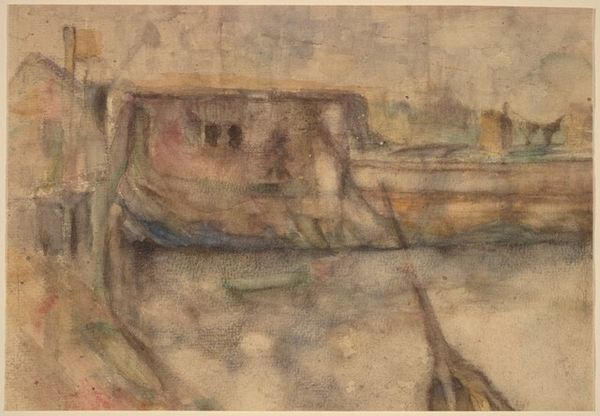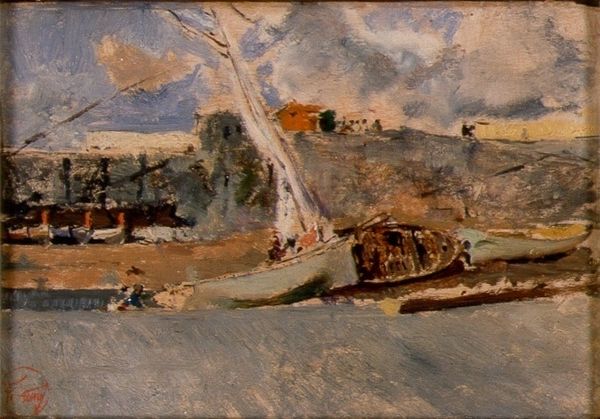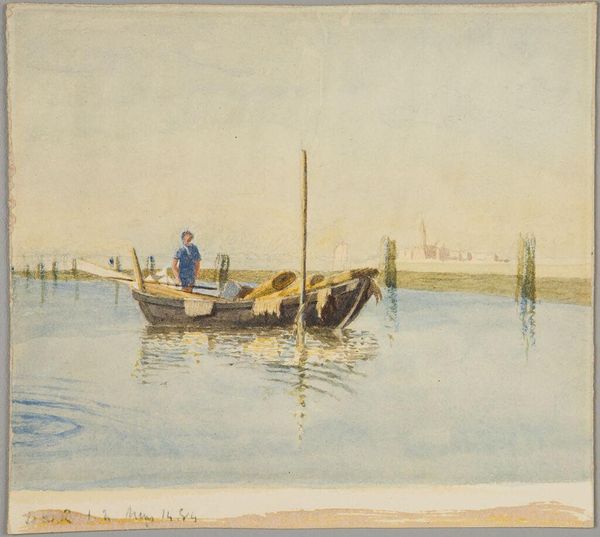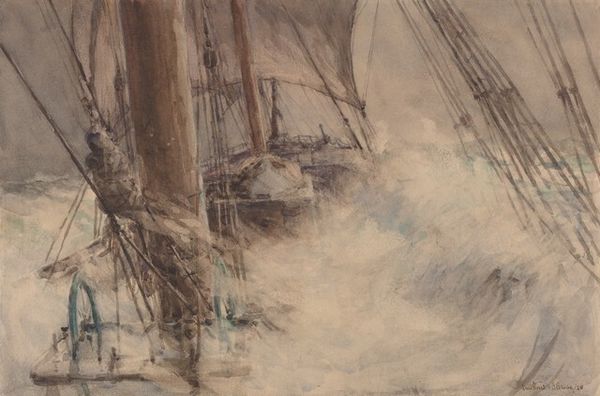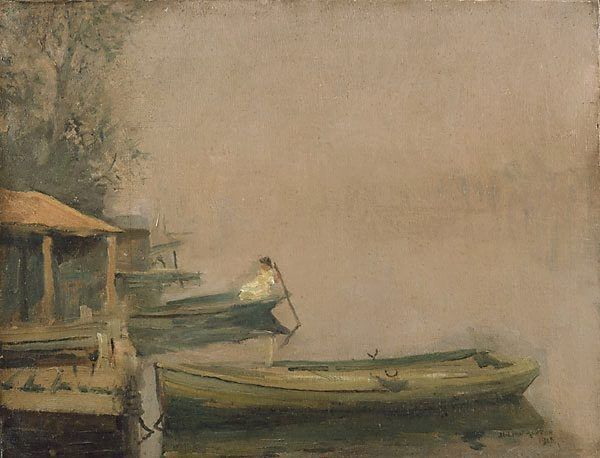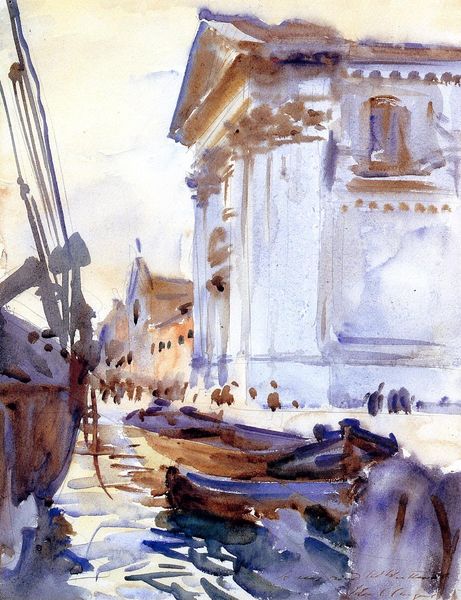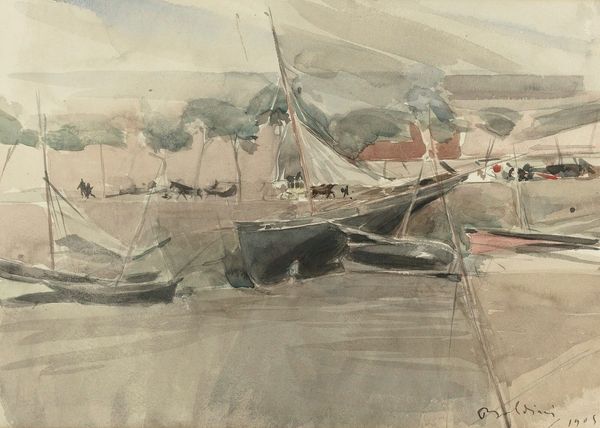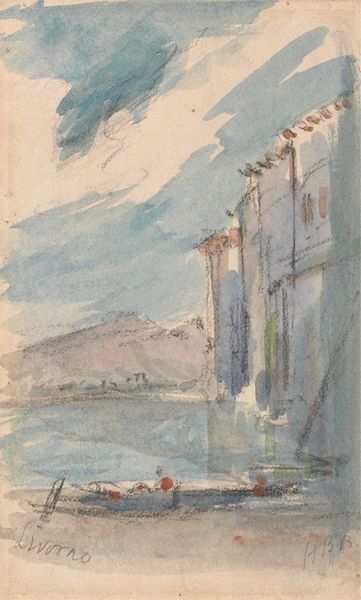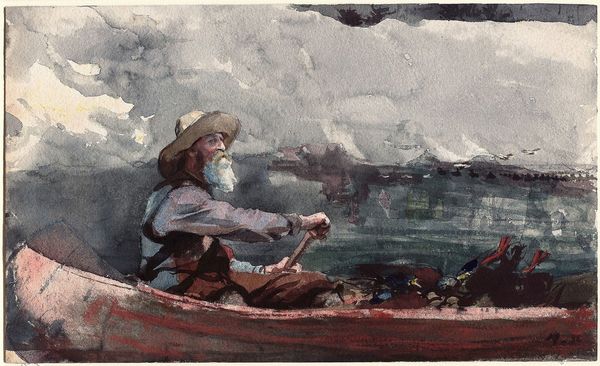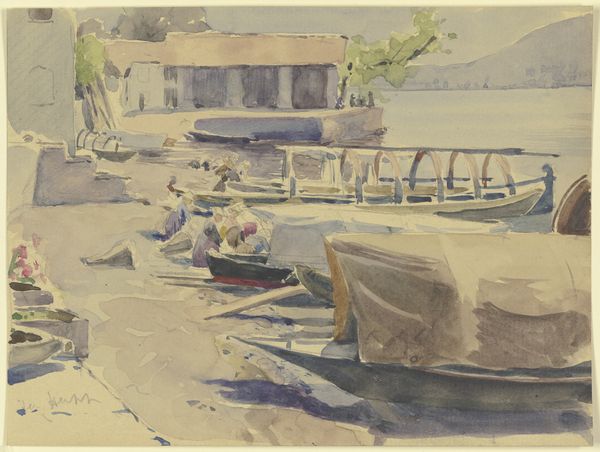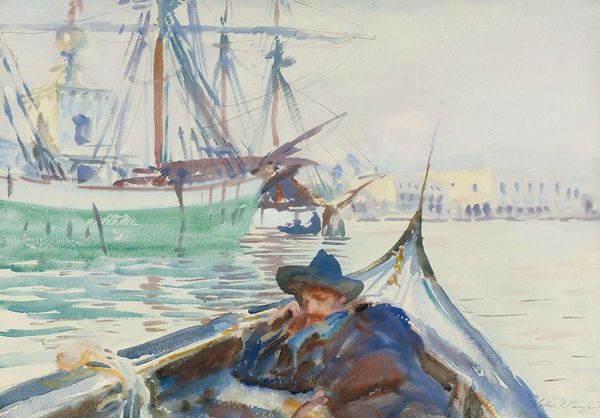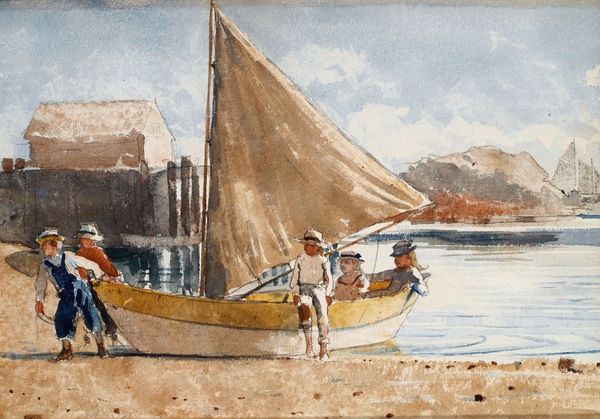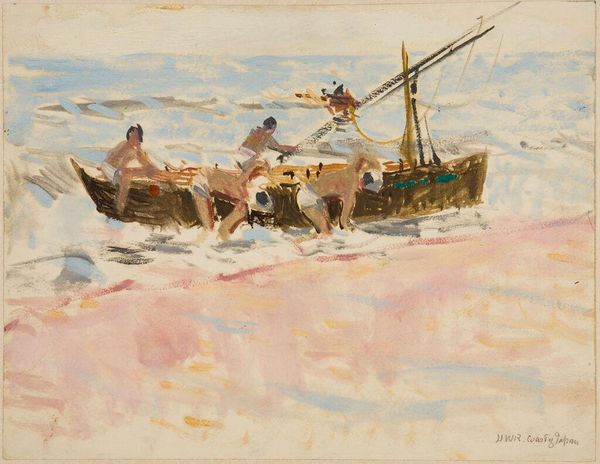
painting, plein-air, watercolor
#
figurative
#
painting
#
impressionism
#
plein-air
#
landscape
#
figuration
#
oil painting
#
watercolor
#
watercolor
Copyright: Public Domain: Artvee
Editor: This is "A Woman in a Boat at the Pier" by Albert Edelfelt. It's difficult to nail down the exact date but appears to be rendered in oil paint, and maybe watercolor too. It has such a light and airy feel to it. What elements really stand out to you? Curator: For me, it's all about the visible brushstrokes. Edelfelt isn't just depicting a scene; he's revealing the very labor involved in its creation. Notice how the application of paint, particularly in rendering the pier and the sails, breaks down the illusion of reality, reminding us of the materiality of the piece. What social forces are present? Editor: Social forces? It feels so isolated and quiet. I wouldn’t have thought of social commentary here. Curator: Consider this was painted during a period of significant social change and growing industrialization. The scene presents a woman engaged in perhaps leisure, which was made possible, at least for some, by specific socioeconomic structures. How do the materials themselves reflect or reinforce these social realities? For example, the relative ease and cost-effectiveness of plein-air painting tools made artistic representation of leisure accessible for rising demographics. Editor: That's interesting. So, even the materials—paint, canvas, brushes—and the method of painting outdoors connect to class and accessibility? The ease of creating art contributes meaning in itself. Curator: Precisely. We often separate 'high art' from everyday craft, but looking at the means of production helps us to see them as part of the same continuum. Edelfelt wasn't just creating a pretty picture. His choice of materials and method speaks to a whole system of labor, leisure, and consumption. How has thinking about the painting through materiality changed your initial impression? Editor: It's definitely less "airy" now and more grounded. I see the connection to a wider world beyond the woman in the boat, one tied to social and economic systems that were essential to the making and the content of the art. I’ll never look at Impressionism the same way! Curator: Good. We always see through layers of the world to reach new meanings, which adds to our cumulative understanding of not just the work but also ourselves and the world.
Comments
No comments
Be the first to comment and join the conversation on the ultimate creative platform.
